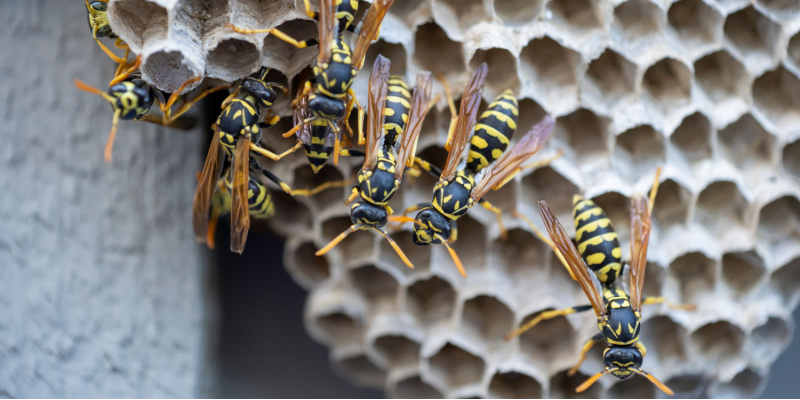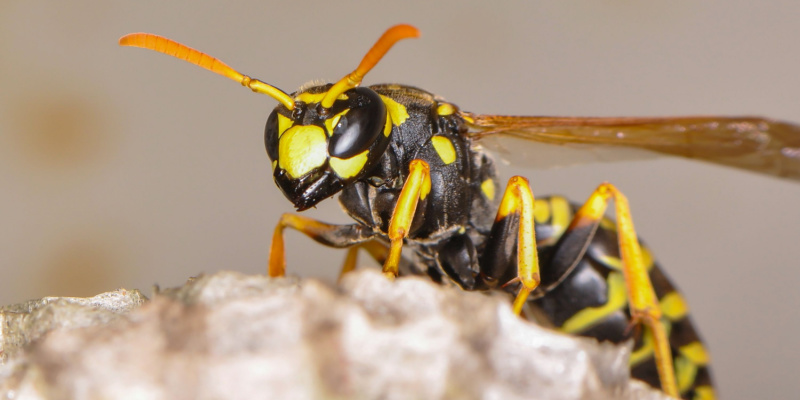Discovering a wasp nest in your yard can be unsettling, prompting concerns for the safety of your family and pets. Wasps, known for their ability to sting multiple times, can become a significant issue, especially in areas frequented by people. Here’s a comprehensive guide on how to address a wasp problem in your yard effectively.
Immediate Steps for Handling Wasp Nests
1. Stay Calm and Avoid Disturbing the Nest
Wasps are most aggressive when their nest is threatened. Avoid fast movements near the nest, and instruct children and pets to stay away.
2. Identify the Nest’s Location
Carefully determine where the wasps are coming from. Common nest sites include under eaves, within bushes, or in the ground.
3. Assess the Situation
The size of the nest and its accessibility will influence your approach. Small, newly formed nests might be easier to handle than larger, established ones.
Deciding Between DIY Removal and Professional Help
DIY Removal:
- Considered for small, accessible nests.
- Equip yourself with protective clothing, including gloves, a long-sleeved shirt, and pants.
- Opt for a wasp spray with a long-range capability to allow for a safe distance during application. Follow the instructions carefully, preferably at dusk or dawn, when wasps are less active.
Professional Help:
- Recommended for large nests, nests in difficult-to-reach areas, or if you’re allergic to wasp stings.
- Professionals have the expertise, equipment, and protective gear to safely remove wasp nests, minimizing the risk of stings.
Preventive Measures to Discourage Wasps
1. Regular Yard Maintenance
Keep your yard well-maintained to reduce sheltering spots for wasps. Trim bushes and trees regularly, and remove any debris where wasps could nest.
2. Secure Food and Trash
Wasps are attracted to food. Ensure outdoor eating areas are clean and food is covered. Secure garbage cans with tight-fitting lids.
3. Remove Standing Water
Eliminate sources of standing water in your yard, including bird baths, clogged gutters, and water features, to discourage wasps seeking moisture.
4. Seal Entry Points
Check your home for cracks or openings that wasps could use to enter and seal them. Pay special attention to attic vents and eaves.
5. Use Decoy Nests
Some wasp species are territorial and will not build a nest near another colony. Hanging a decoy wasp nest early in the season may prevent new nests in your yard.
Monitoring and Long-Term Strategies
After addressing the immediate problem, continuous monitoring of your property for new wasp activity is crucial. Consider consulting with a pest control professional to develop a long-term management plan, including regular inspections and treatments that can deter wasps from returning.
Having a wasp problem in your yard requires a measured approach, balancing immediate safety concerns with long-term preventive strategies. Whether you choose to tackle the problem yourself or enlist professional help (please consider professional help for your safety), understanding the steps to safely remove wasp nests and implementing measures to make your yard less attractive to wasps can help you maintain a peaceful, sting-free outdoor environment.




